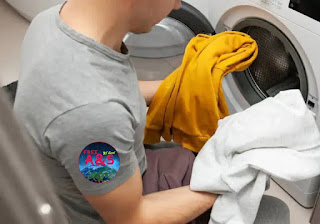Unraveling the Threads: The Fascinating World of Textile Fibers
Welcome to FreeAstroScience.com, your go-to guide in the cosmos of textiles. Have you ever pondered the incredible diversity within your wardrobe? Let's embark on a journey through the fabric of our daily lives, exploring the rich tapestry of fibers that clothe us. From the softness of cotton to the resilience of polyester, the textile universe is as varied as it is vast, composed of three main groups of fibers: natural, man-made, and synthetic. Each group brings its unique properties to the fashion table, and here, we'll unravel the mysteries behind them, weaving together the science and history that make our garments so much more than mere threads.
The Natural Wonders: Cotton, Wool, and Silk
In the realm of natural fibers, we find treasures sourced directly from Mother Nature. Cotton, the comfort king, sprouts from the seeds of its namesake plant. Wool, with its cozy embrace, is sheared from the fleece of sheep. And silk, the epitome of luxury, is spun from the delicate threads of silkworms. These gifts of nature have clothed humanity for millennia, each with a story as rich as its texture.
Man-Made Marvels: Rayon and Beyond
Transitioning from purely natural to human ingenuity, man-made fibers like rayon emerge. Rayon, a chameleon of the textile world, originates from wood cellulose, transformed through human craft into a versatile fiber. It's an exquisite example of how we've modified natural materials to expand our wardrobe's possibilities.
The Synthetic Frontier: Nylon, Polyester, and Progress
Synthetics are the alchemists' creation in the textile universe, born from chemistry and innovation. Polymers derived from petroleum are spun into fibers like nylon and polyester, offering unparalleled strength and maintenance ease. These fibers are the vanguard of fabric technology, pushing the boundaries of durability and performance.
Blending the Best: Combining Fibers for Perfection
Our clothing often merges these three groups, blending their best traits. Cotton-polyester fabric is a classic example, marrying cotton's breathability with polyester's durability to create garments that are both comfortable and long-lasting.
Cellulose's chemical structure gifts it with hydrophilic properties. Garments made from cellulose derivatives, like cotton, can absorb moisture and wick away sweat, making them a staple for comfort.
The Conundrum of Shrinkage: Caring for Our Clothes
Despite their myriad benefits, natural fibers like cotton and wool are notorious for shrinking. This is due to the release of stress in the fibers during washing, leading to a smaller garment post-laundry. Fear not, for keeping your clothes true to size is straightforward—simply adhere to the care label and avoid hot water.
The Historical Tapestry: Tracing Cotton's Roots
To add a twist of trivia to our fiber tale, cotton's history stretches back about 8,000 years, with its origin a topic of debate among scholars. While some point to India, others suggest the pre-Columbian Americas. Even in classical antiquity, cotton was a known commodity, although not widely cultivated.
Join us on this exploratory voyage at FreeAstroScience.com as we delve deeper into the threads that connect us all. Whether it's the science behind their properties or the fascinating history they carry, the fibers in our clothes have a story to tell, and we're here to narrate it.


Post a Comment